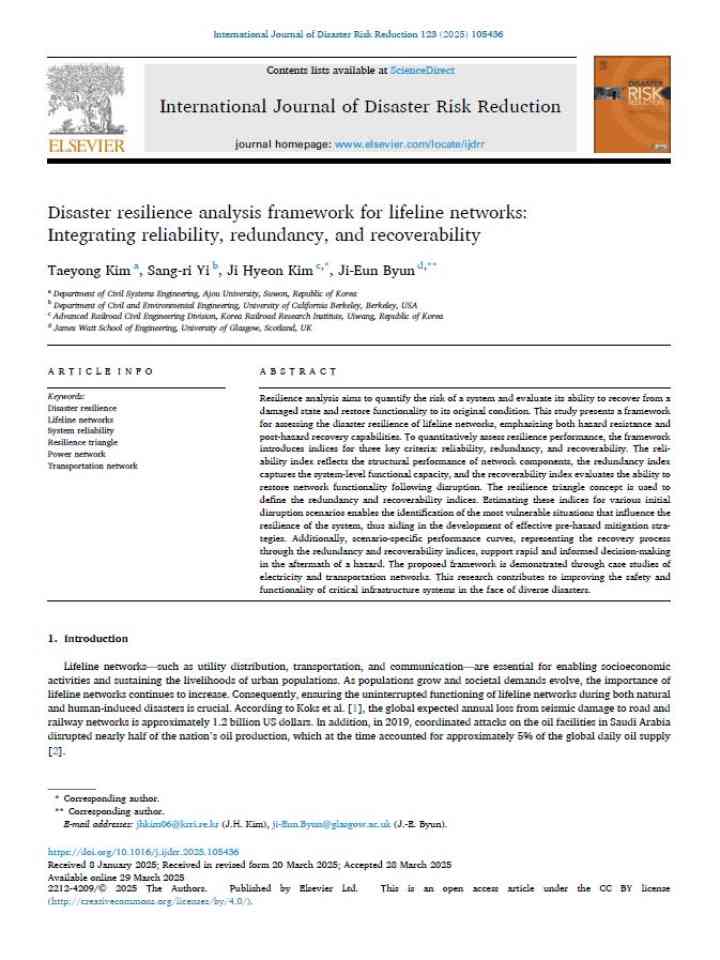Disaster resilience analysis framework for lifeline networks: Integrating reliability, redundancy, and recoverability
This study presents a framework for assessing the disaster resilience of lifeline networks, emphasizing both hazard resistance and post-hazard recovery capabilities. To quantitatively assess resilience performance, the framework introduces indices for three key criteria: reliability, redundancy, and recoverability. The reliability index reflects the structural performance of network components, the redundancy index captures the system-level functional capacity, and the recoverability index evaluates the ability to restore network functionality following disruption.
The resilience triangle concept is used to define the redundancy and recoverability indices. Estimating these indices for various initial disruption scenarios enables the identification of the most vulnerable situations that influence the resilience of the system, thus aiding in the development of effective pre-hazard mitigation strategies. Additionally, scenario-specific performance curves, representing the recovery process through the redundancy and recoverability indices, support rapid and informed decision-making in the aftermath of a hazard. The proposed framework is demonstrated through case studies of electricity and transportation networks. This research contributes to improving the safety and functionality of critical infrastructure systems in the face of diverse disasters.
Explore further
